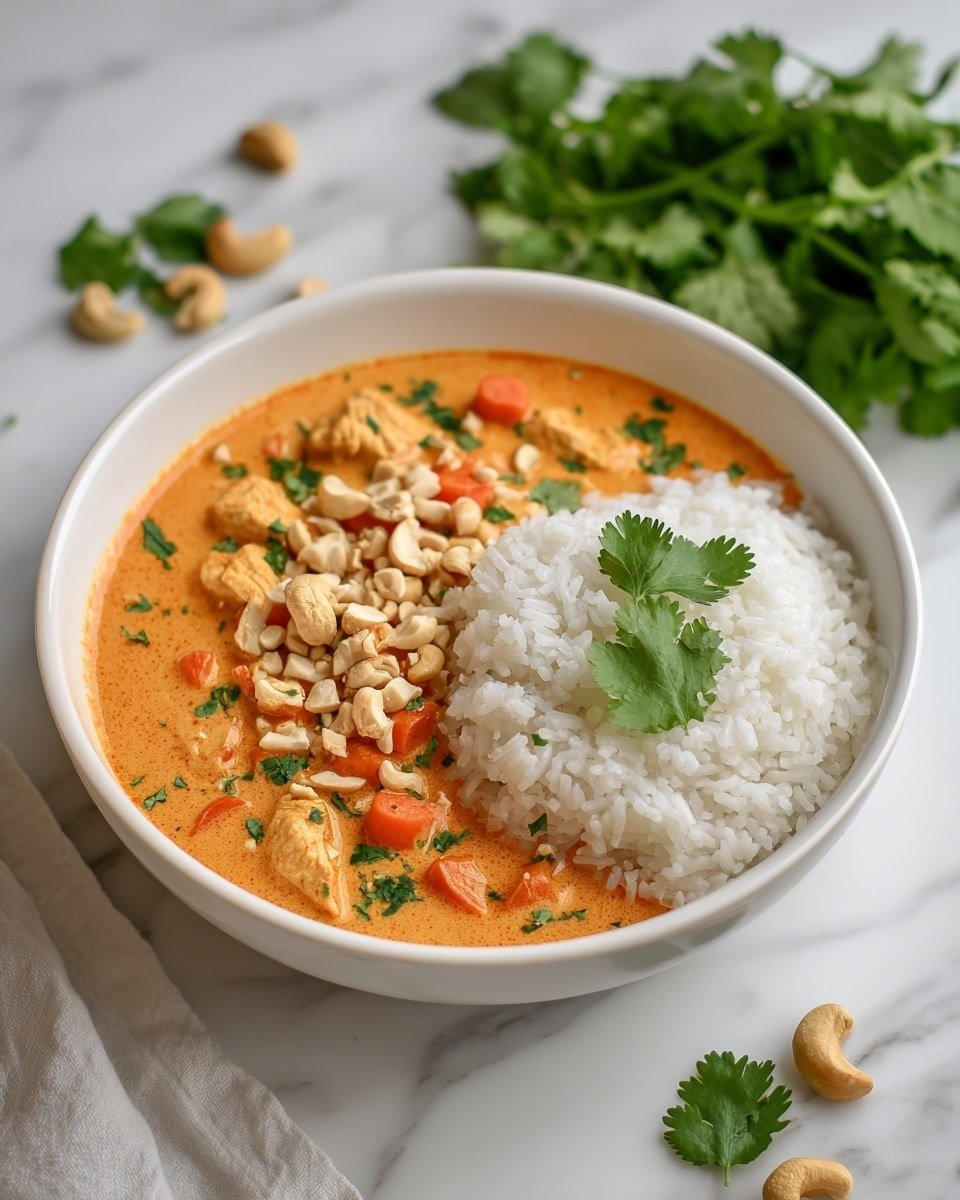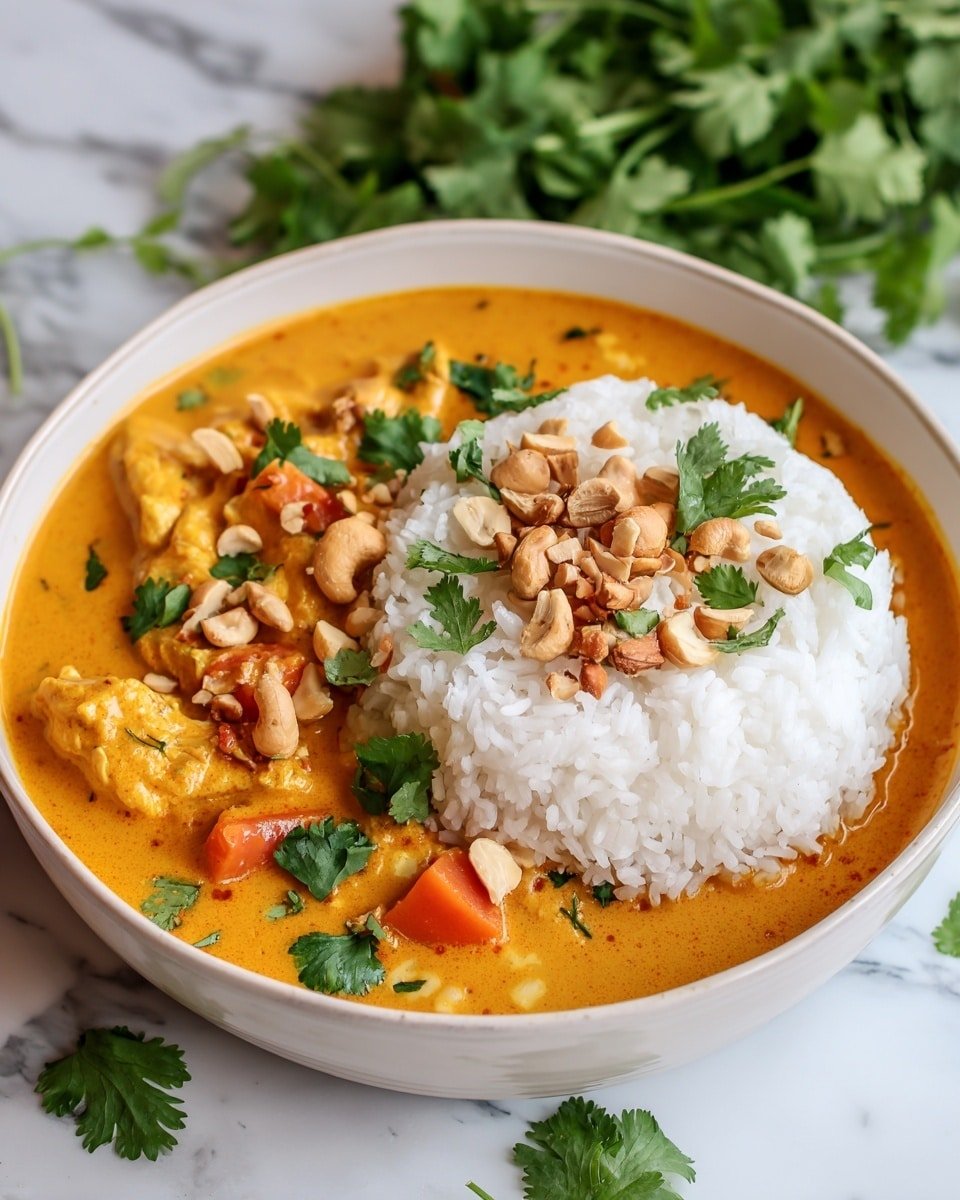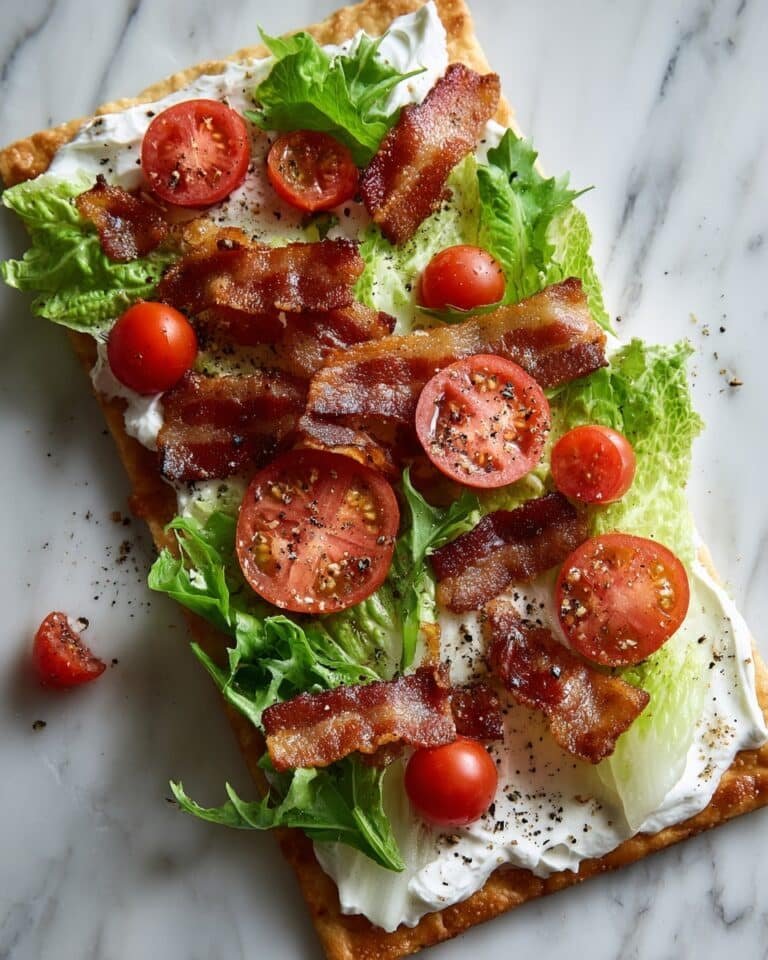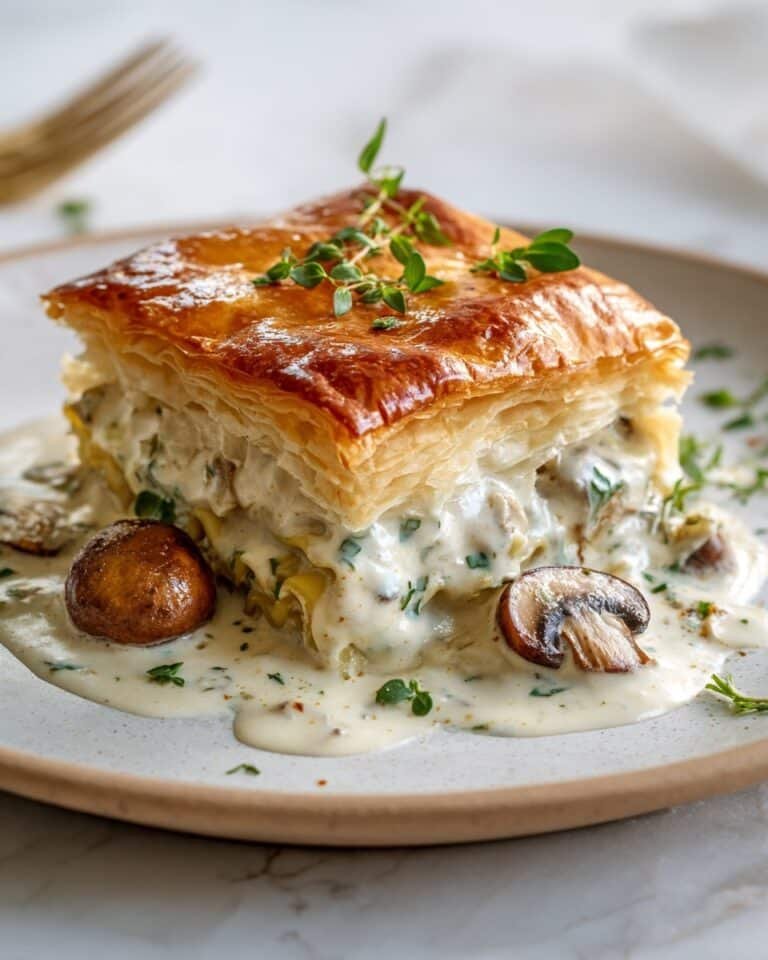Cozy Thai Peanut Curry Recipe, Made Simple
There’s something wonderfully comforting about a bowl of Thai peanut curry simmering gently on the stove—warm, fragrant, and inviting. I love how this dish balances the earthy sweetness of coconut milk with the lively punch of red curry paste and a creamy, nutty finish from peanut butter. It’s the kind of meal that feels both indulgent and nourishing, perfect for quiet weekends or when you want to impress without stress.
When you make this Thai Peanut Curry Recipe, you’ll find it’s a beautiful blend of textures: tender chicken, soft carrots, and potatoes that soak up all those luscious flavors. Plus, it’s versatile—you can easily swap vegetables or protein to suit your tastes or pantry. Let’s dive in and get your kitchen humming with those toasty, buttery notes.
This recipe is straightforward but yields complex, layered flavors that feel like a special treat without hours of fuss.
What Makes This Recipe Special
- Balanced flavors: Sweet, rich, and thoughtfully textured.
- Friendly technique: Clear steps built for home success.
- Easy to personalize: Swap in seasonal twists without stress.
- Make-ahead smart: Prep components to save time on busy days.
Ingredient Lowdown

- Carrots & Potatoes: These veggies add soft, hearty bites that soak up curry richness beautifully. Feel free to swap potatoes for sweet potatoes in cooler months for a cozy twist.
- Yellow Onion: Builds that savory foundation with gentle sweetness when sautéed.
- Chicken Breasts: I love using chicken for a lean protein that cooks quickly and stays tender; tofu or tempeh work great if you prefer plant-based.
- Olive Oil (or Coconut/Vegetable Oil): The cooking fat that helps develop flavor when you sauté your veggies and protein.
- Ground Ginger & Minced Garlic: Essential aromatics that add depth and warmth right from the start.
- Red Curry Paste: The punchy heart of this recipe, bringing heat and complex spices. Start with less if you prefer milder curry and build up.
- Coconut Milk: This makes the curry creamy and smooth, mellowing spices with subtle sweetness.
- Peanut Butter: The star for nutty creaminess and a hint of indulgence—natural, unsweetened peanut butter works best.
- Brown Sugar: A little sweetness to balance the salty and spicy notes.
- Soy Sauce: Adds umami and saltiness—tamari is a great gluten-free option.
- Lime Juice: Brightens the whole dish with that fresh, citrusy zing.
Set Up for Success
Before you start cooking, get all your ingredients chopped and measured—this simple mise en place really speeds things up and keeps your workflow stress-free. Use a sharp knife for clean cuts of veggies and chicken; even bites mean even cooking. You won’t need the oven, but a wide, heavy-bottom skillet or pot is your best bet for even heat distribution.
Tools & Kitchen Gear
Helpful tools that make this Thai Peanut Curry Recipe smooth from start to finish—plus optional extras for efficiency and precision.
Step-by-Step: Thai Peanut Curry Recipe

- Heat the oil in a large skillet or pot over medium-high heat until shimmering. You want it hot enough to sizzle gently when ingredients hit the pan.
- Add the diced onions, carrots, and potatoes, sautéing them for about 4–5 minutes. Watch as the edges of onions become translucent and the carrots start to take on a toasty golden hue—this builds sweetness and depth.
- Toss in the cubed chicken, ground ginger, minced garlic, and red curry paste. Stir well to coat every piece in that fragrant paste. Cook for another 2 minutes until the chicken starts turning opaque and you can smell those lively spices blooming.
- Pour in the coconut milk, scraping up any bits stuck to the pan. Bring the mixture to a gentle simmer, then reduce heat to medium-low. Let it cook uncovered for 10 minutes, allowing the carrots and potatoes to soften until tender but not mushy.
- Stir in peanut butter, brown sugar, soy sauce, and fresh lime juice. Mix thoroughly and let it cook for another 4–5 minutes. You’ll notice the sauce thicken slightly and develop a rich, glossy sheen.
- Serve hot, ladled over fluffy Jasmine or brown rice. Don’t forget a sprinkle of chopped peanuts on top for that irresistible crunch and a final nod to the peanut flavor that ties it all together.
Chef’s Notes & Success Tips
To keep your chicken tender, avoid cooking on too high heat after adding coconut milk—gentle simmering is the key. Also, if you love extra creaminess, stir the peanut butter in gradually off the heat before final warming to prevent separation. And for layering flavor, taste before adding soy sauce and sugar; adjust to your liking.
Flavor Twists for Thai Peanut Curry Recipe
- Substitute chicken with shrimp or tofu for a pescatarian or vegetarian version.
- Add chopped bell peppers or green beans for extra crunch and color.
- Stir in fresh basil or cilantro just before serving for a bright herbal touch.
- For a smoky depth, add a splash of toasted sesame oil at the end.
- Swap brown sugar for palm sugar or honey to vary sweetness subtly.
- Kick up the heat with fresh sliced chili or a dash of chili flakes.
Storage & Make-Ahead Tips
- Store leftovers in an airtight container in the refrigerator for up to 3 days—flavors deepen overnight.
- This curry freezes well; cool completely before freezing in portion-sized containers for up to 2 months.
- Reheat gently on the stovetop or microwave, adding a splash of water or coconut milk if it’s too thick.
- Cook veggies a little less than usual if you plan to reheat so they don’t get mushy.
Thai Peanut Curry Recipe FAQs
- Can I make this Thai Peanut Curry Recipe vegan? Absolutely! Just swap chicken for tofu or chickpeas, and use a vegan-friendly curry paste and soy sauce.
- What’s the best rice to serve with this curry? Jasmine rice is classic thanks to its fragrant aroma, but brown or basmati rice works well too for nuttier texture.
- How spicy is this dish? The heat depends on your curry paste—start with a smaller amount if you’re sensitive, then add more to taste.
- Can I prepare this ahead of time? Yes! The flavors actually improve after sitting a few hours or overnight. Just reheat gently when ready to serve.
- What if I don’t have red curry paste? You can substitute with other Thai curry pastes, but red has that perfect balance of spice and aroma for this recipe.
Thai Peanut Curry Recipe
This Thai Peanut Curry is a flavorful and comforting dish featuring tender chicken, hearty vegetables, and a rich, creamy coconut peanut curry sauce. Perfectly balanced with red curry paste, peanut butter, and a hint of lime, this skillet-cooked curry is easy to prepare and ideal served over jasmine or brown rice for a satisfying meal.
- Prep Time: 15 minutes
- Cook Time: 25 minutes
- Total Time: 40 minutes
- Yield: 4 servings
- Category: Main Course
- Method: Stovetop
- Cuisine: Thai
Ingredients
Vegetables
- 2 carrots, cut into bite size pieces
- 2 medium potatoes, cut into bite size pieces
- 1/2 yellow onion, diced
Protein
- 2 chicken breasts, cubed
Seasonings & Sauces
- 2 Tbsp. olive oil (coconut or vegetable oil can also be used)
- 2 tsp. ground ginger
- 2 tsp. minced garlic
- 1 – 4oz. jar red curry paste
- 2 cans coconut milk (about 13.5 oz each)
- 1/4 cup + 2 Tbsp. peanut butter
- 5 Tbsp. brown sugar
- 4 tsp. soy sauce
- juice from 1 lime
Instructions
- Sauté Vegetables: In a large skillet or pot, heat the olive oil over medium-high heat. Add the diced onions, chopped carrots, and chopped potatoes. Sauté for 4-5 minutes until the vegetables begin to soften.
- Cook Chicken and Aromatics: Add the cubed chicken breasts, ground ginger, minced garlic, and red curry paste to the skillet. Stir well to combine and cook for an additional 2 minutes to allow the flavors to meld and the chicken to start cooking.
- Add Coconut Milk and Simmer: Pour in the coconut milk and stir to combine everything. Reduce heat to medium-low and let the curry simmer for 10 minutes, or until the carrots and potatoes are tender.
- Finish the Curry: Stir in the peanut butter, brown sugar, soy sauce, and fresh lime juice. Continue cooking for another 4-5 minutes to thicken the sauce and incorporate all flavors.
- Serve: Serve the Thai peanut curry hot over cooked jasmine, white, or brown rice. Garnish with chopped peanuts if desired for extra texture and flavor.
Notes
- You can substitute chicken breasts with tofu or shrimp for a different protein.
- Add vegetables like bell peppers or snap peas for extra color and nutrition.
- Adjust the amount of red curry paste based on your spice preference.
- For a creamier curry, stir in a little extra coconut milk or peanut butter.
- This dish pairs well with steamed rice or rice noodles.
- Leftovers can be stored in the refrigerator for up to 3 days and reheated gently.











